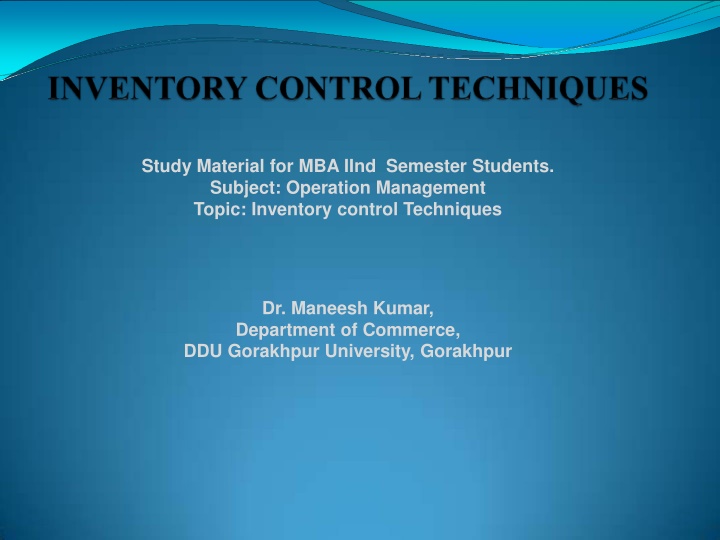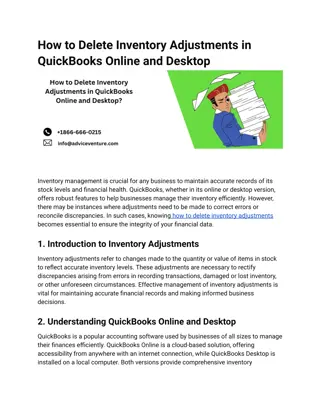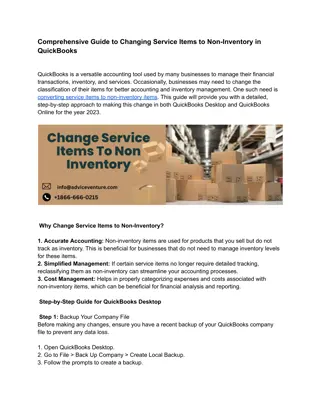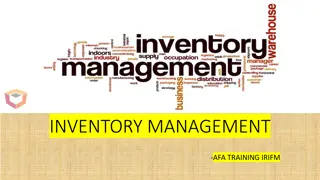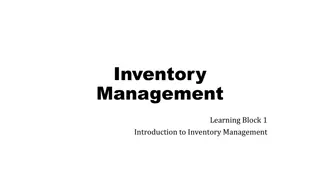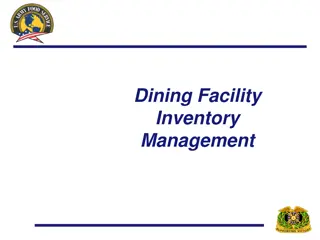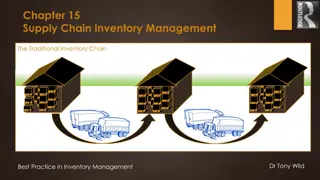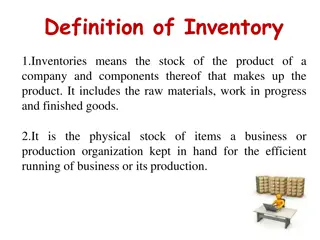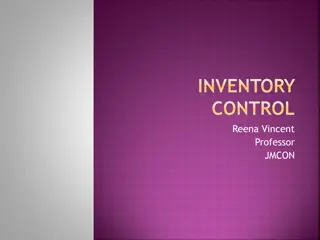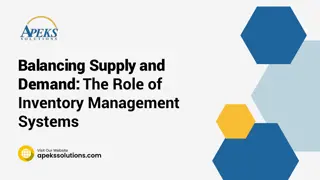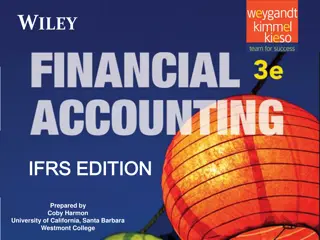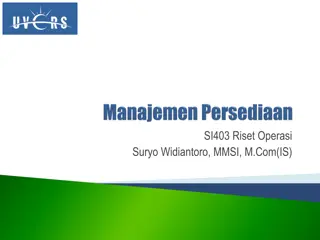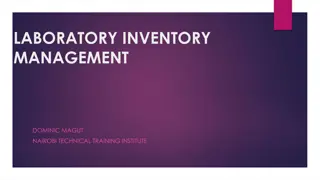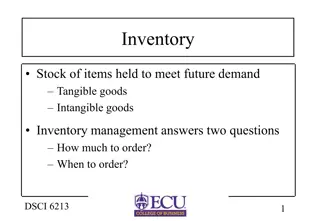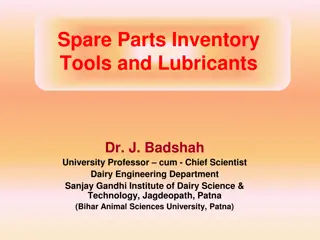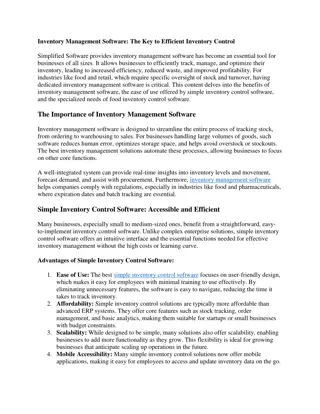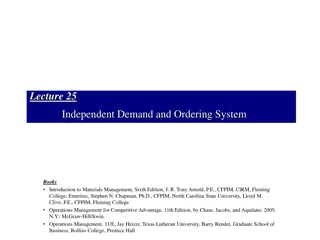Inventory Control Techniques in Operations Management
Techniques like ABC Classification, HML Classification, VED Classification, and SDE Classification are used in inventory management to categorize items based on various criteria. Each technique serves a specific purpose in optimizing inventory control for efficient operational management.
Download Presentation

Please find below an Image/Link to download the presentation.
The content on the website is provided AS IS for your information and personal use only. It may not be sold, licensed, or shared on other websites without obtaining consent from the author.If you encounter any issues during the download, it is possible that the publisher has removed the file from their server.
You are allowed to download the files provided on this website for personal or commercial use, subject to the condition that they are used lawfully. All files are the property of their respective owners.
The content on the website is provided AS IS for your information and personal use only. It may not be sold, licensed, or shared on other websites without obtaining consent from the author.
E N D
Presentation Transcript
Study Material for MBA IInd Semester Students. Subject: Operation Management Topic: Inventory control Techniques Dr. Maneesh Kumar, Department of Commerce, DDU Gorakhpur University, Gorakhpur
ABC CLASSIFICATION. HMLCLASSIFICATION. VED CLASSIFICATION. SDE CLASSIFICATION. FSN CLASSIFICATION. EOQ CLASSIFICSTON. MAX-MINIMUMSYSTEM. TWO BIN SYSTEM
ABC Analysis: One of the widely used techniques. Objective is to vary the expenses associated with control , according to potential savings associated with a proper levelof control. The ABC approach means of categorizing the inventoryitems into three classes A ; B ; C . The categorizing is done according to the turnover ofthe various products.
Procedure: List each inventory by number or by designation. Determine annual vol of usage and moneyvalue. Multiply each item annual vol of usage and rupeevalue. Select top 10 percent of all items which have high repee percentage classify them as A . And accordingly.
Example: InventoryItem Annualuse Percentage oftotal usage 101 3,000 0.3 106 4,00,000 40.0 117 7,000 0.7
High Medium Low(HML): The HML classification is same procedure as adopted inABC. The core difference is HML classification unit value isthe criterion and not the annual consumptionvalue. The inventories should be place in descending order and it isup to mgmt to fix limits of these three categories. Example: the mgmt may decide all units with unit value ofRs 2,000 and above will be H items ..
Vital Essential Desirable: They are done to determine the criticality of an item and its effect on production and other services. It is specially used for classification of spare parts. If the part is vital most it is given V , if it is essential then is given as E ,if it is not so essential it is given as D . For V items large stocks are maintained while for E items minimum stock is enough.
SDE Classification: The SDE is based upon the availability of items. Here S refers to Scarce items D refers to Difficult items E refers to Easy to acquire This is based on problems faced in procurement,were some strategies are made on purchasing.
FSN Analysis: The abbreviation for FSN in Fast moving, Slow movingand Non moving . Here in this analysis, the date of receipt or the last date ofissue, which ever is later, to determine the no.of months which have lapsed from last transaction. FSN is helpful in identifying active items which need to be reviewed regularly and surplus items and non-moving itemsare examined.
SOS Analysis: S stands for Seasonal items and OS -Off Seasonal items. In general it is merit to seller to buy seasonal items at lower price and keep inventory and sell them at high price duringOff seasons. If not the seller has to buy the goods at higher prices duringOff seasons. Decisions are taken based on the fluctuations and availability.
XYZ Analysis: This classification is based on the value of inventory of materials actually heldin stores at given time. This helps to control the average inventory modelvalue. X items which are 10% of no.of items stored, but accounting for 70% of thetotal inventory value. Y items are 20% of no.of items stored and account for 20% of totalinventory value. Z items are 70% of no.of items stored and account for 10% of the totalvalue. This analysis focuses on efforts to reduce the inventory of these items.
GOLF Analysis: This stands for Govt, Open mkt, Local or Foreign source of supply. For certain items, imports are canalized through govt agencies viz; State trading corp, Minerals and Metals Trading Corp, Indian drugs and Pharma. Here no control techiques are notapplied.
